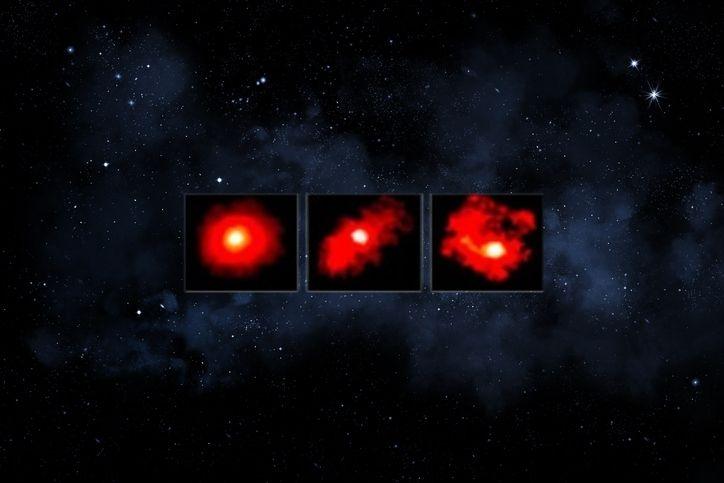James Webb: Three huge 'Red Monster' galaxies discovered by space telescope

- Published
Researchers say they have uncovered three huge mysterious 'Red Monster' galaxies.
The surprising discovery was made from images taken by the James Webb Space Telescope (JWST).
According to experts, the galaxies formed at "unexpected speeds" in the early universe.
The findings suggest that the formation of stars at that time was far quicker than previously thought.
More space news
- Published4 days ago
- Published1 November
- Published8 November
What have scientists found using the James Webb telescope?
The discovery was made by an international team of scientists lead by the University of Geneva, in Switzerland, and the University of Bath.
Researchers decided to study galaxies which were formed within the first billion years of cosmic history.
Thanks to the space telescope, they were able to identify three huge galaxies - each nearly as big as the Milky Way.
The galaxies appeared red in the images because of their high dust content.
As a result, experts nicknamed them the "three Red Monsters".
Scientists say that the results suggest that the formation of stars in the early Universe was much faster than previously thought.
Until now, it was generally believed that all galaxies formed slowly within large halos of dark matter.
Dr Mengyuan Xiao, lead author of the study, explained: “Our findings are reshaping our understanding of galaxy formation in the early Universe.
"The Red Monsters are just the beginning of a new era in our exploration of the early Universe,” she said.
Professor Stijn Wuyts, from the University of Bath, added: "That is what is so great about astronomy, we're constantly being surprised by new discoveries."
What is the James Webb telescope?
The James Webb Telescope launched on Christmas Day in December 2021 on its mission to show the first stars to light up the Universe.
It released its first images in July 2022, and since then, has been surprising experts with its space discoveries.
It's named after one of the main scientists behind the Apollo Moon landings and is the successor and upgrade to the famous Hubble space telescope.
It took 30 years to put together and is made up of 18 mirrored segments which are specially designed to capture infrared light from the first galaxies that formed in the early universe.
One of the many aims of the telescope is to train it to detect atmospheres on distant planets to see if those worlds could have life.
